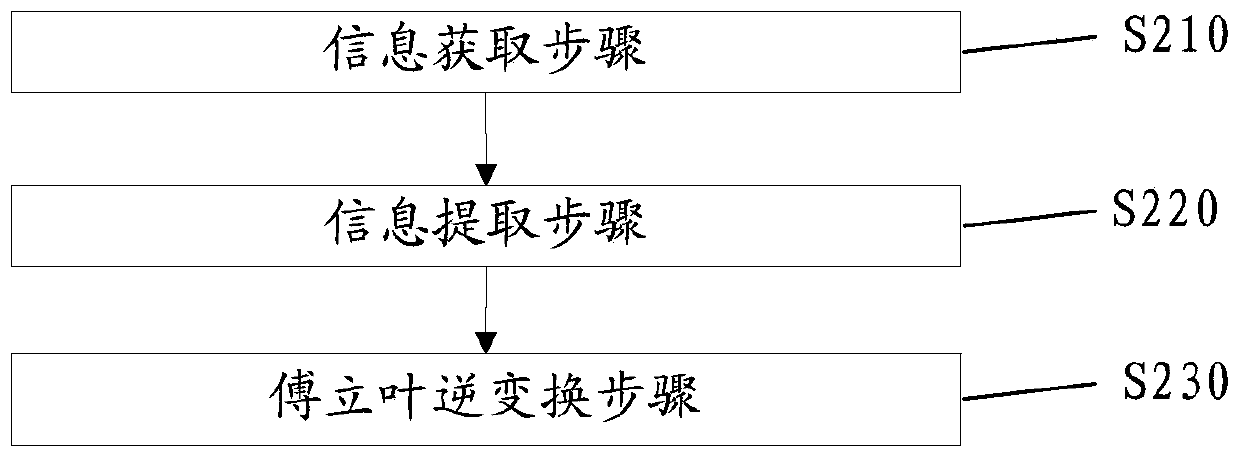Information hiding method based on big data and Fourier transform, and robot system
A Fourier transform and robot system technology, applied in digital data protection, electrical digital data processing, instruments, etc., can solve the problems of limited information hiding data volume, easy to be cracked, etc., to increase the difficulty of detection and cracking, and improve capacity and safety, the effect of improving safety
- Summary
- Abstract
- Description
- Claims
- Application Information
AI Technical Summary
Problems solved by technology
Method used
Image
Examples
Embodiment 1
[0048] Embodiment 1 provides an information hiding method, such as figure 1 As shown, the method includes step S110 to step S140.
[0049] Fourier transform step S110: Convert the secret information x that needs to be hidden into the data of the first function f(t), and use the first function f(t) as the original function to perform Fourier transform The obtained image function is used as the second function F(w), and the obtained data of the second function F(w) is used as the first information. Secret information refers to the information to be hidden, which can be text, password, image, graphics or sound, etc. Preferably, the secret information x is obtained, and the secret information is divided into multiple units (preferably, the division method includes spatial division or temporal division or sequential division), and the number of each unit is taken as t Value (preferably, the number includes space position or time or serial number, if it is divided according to space, ...
Embodiment 2
[0054] Embodiment 2 provides a preferred information hiding method. According to the information hiding method described in Embodiment 1, combined with big data, the Fourier transform step S110 specifically includes step S111; the information insertion step S120 specifically includes step S121; and the position acquisition step S130 specifically Including step S131.
[0055] Information segmentation step S111: segment the secret information x into multiple parts of the secret information x1, x2,..., xm (m is the number of splits), and then convert them into multiple first functions f(t1), f(t2),..., f(tm) data, and then use multiple of the first functions as the original functions to perform Fourier transforms respectively The image functions corresponding to the multiple first functions are respectively used as multiple second functions F(w1), F(w2),..., F(wm), and data of multiple second functions are obtained as multiple first functions. One information. Preferably, the secr...
Embodiment 3
[0060] Embodiment 3 provides an information extraction method, such as figure 2 As shown, the method includes step S210 to step S230.
[0061] Information acquisition step S210: accept the first position s input by the user.
[0062] Information extraction step S220: Extract the first information, that is, the data of the second function F(w) from the first position s in the big data. Preferably, the start number and the end number are obtained from the first position s in the big data. For example, the information at the first position s in the big data is "the data of the second function is "F(w) data, "the starting position is the starting position, and the ending position is" The ending position, then according to the keywords "the data of the second function is", "the starting position is", "the ending position is" for matching, the corresponding content after these keywords can be located as the first The data of the second function F(w), the start position, and the end po...
PUM
 Login to View More
Login to View More Abstract
Description
Claims
Application Information
 Login to View More
Login to View More - R&D
- Intellectual Property
- Life Sciences
- Materials
- Tech Scout
- Unparalleled Data Quality
- Higher Quality Content
- 60% Fewer Hallucinations
Browse by: Latest US Patents, China's latest patents, Technical Efficacy Thesaurus, Application Domain, Technology Topic, Popular Technical Reports.
© 2025 PatSnap. All rights reserved.Legal|Privacy policy|Modern Slavery Act Transparency Statement|Sitemap|About US| Contact US: help@patsnap.com



